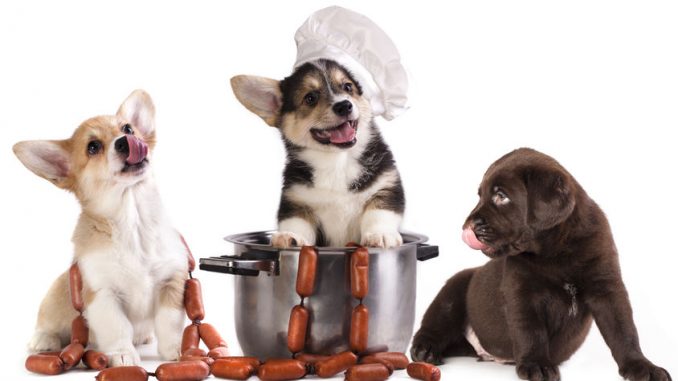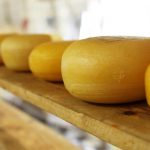
Pet food is divided into various basic types. These include dry, semi-moist or intermediate moisture, as well as frozen dessert types and canned foods. The dry pet food is also known as kibble and there is a fourth category called treats.
Globally, the pet food industry is worth something like $60 billion which puts it in the same league as snack foods.
The manufacture of pet food is similar to human food processing. It is a highly regulated process. In terms of processing, all hygiene requirements must comply with Annex II of EC Regulation 183/2005. This annex details all the requirements relating to facilities and equipment, people, quality control, storage etc.
The European Pet Food Industry Federation has produced a Guide to the Good Practice for the Manufacture of Safe Pet Foods. This contains highly useful information and guidance to help you follow the law and produce safe pet food.
A canned pet food for example is produced the same way as any other although the raw materials might be different. All ingredients should be fresh and suitable for consumption. Further details on the types, quality and regulations around pet foods are available in our sister article. If you are interested we also have a commercial article on available brands.
Regulations
Just note that in the USA, commercially-available pet foods are regulated under the Federal Food, Drug, and Cosmetic Act (FFDCA) as follows: “requires that all animal foods, like human foods, be safe to eat, produced under sanitary conditions, contain no harmful substances and be truthfully labeled”
When it comes to ethylene oxide, manufacturers under EU law need to ensure compliance with the default residue limit of 0.02 mg/kg in animal feed which implies pet food too. This ruling was noted by the UK’s Food Standards Agency.
Moist and Canned Pet Foods
Foods which are moist and usually canned have a texture and water content similar to fresh meat. They are designed to replace fresh joints of meat or meat pieces. They have a extremely high palatability and appeal to cats and dogs. Because of their high moisture content, they must be preserved by heat sterilization usually through canning. Cans are tinned steel but heat resistant pouches have come to the fore. Most canning processes use batch or retort but larger production is achieved more economically with a continuous system. The Campden process which is a botulinum cook is the most effective.
Very high premium pet foods use single-serve pouches and trays with foil lids. Many European pet foods have meaty chunks in a gravy and jelly. It has become one of the leading innovations of the business.
Semi-Moist Pet Foods
The intermediate moisture pet foods have a 25 to 35% moisture content. They use various water soluble solids such as sugars, salt, sorbates as preservatives and propylene glycol. All is sufficient to stabilize the pet food by controlling water availability and keep the product at ambient without the need for refrigeration.
This type of pet food is not as popular as it used to be and is being replaced by semi-dry foods where the moisture content is between 15 and 25%. This is a softer version of kibble.
Manufacture of Wet Pet Foods
The production of wet pet food (and dry pet food of course) involves the use of various equipment and machinery. While specific equipment may vary depending on the manufacturer and the scale of production, here are some common types of equipment used in the manufacturing process.
- Blenders/Mixers: Industrial blenders or mixers are used to combine and blend the ingredients thoroughly. These machines ensure uniform distribution of ingredients and create a consistent mixture.
- Cooking Equipment: Large steam kettles or retort cookers are employed for the cooking process. These vessels allow for efficient heating and cooking of the ingredients, promoting food safety and enhancing flavor and texture.
- Grinders/Homogenizers: Grinding or homogenizing equipment is used to process the cooked mixture and achieve a smooth texture. This step helps create a consistent product that is easier for pets to eat and digest.
- Packaging Machines: Wet pet food can be packaged in cans, trays, or pouches. Packaging machines are used to fill the containers with the prepared food and seal them to maintain freshness. These machines can handle the specific packaging format chosen by the manufacturer.
- Sterilization Retort: Canned wet pet food typically undergoes a sterilization process to ensure safety and increase shelf life. Sterilization retorts are large pressure vessels designed to subject the sealed cans to high heat and pressure, effectively eliminating bacteria and extending the product’s shelf life.
- Cooling Systems: Once the sterilization process is complete, cooling systems are employed to bring the temperature of the packaged food down to room temperature. This ensures the product’s safety and stability.
- Labeling Machines: After cooling, labeling machines are used to apply labels to the cans, trays, or pouches. These labels provide important information about the product, including ingredients, nutritional content, and feeding guidelines.
- Quality Control Equipment: Throughout the manufacturing process, various quality control equipment may be used. This can include equipment for testing the food for contaminants, such as bacteria or mold, as well as tools for measuring nutritional content and ensuring compliance with regulations.
Manufacture Of Dry Pet Food (Kibble)
Dry pet food is less than 12% moisture. These products are a complex mixture of grains and vegetable flours such as wheat or corn starch, rendered animal protein meal, animal and vegetable fats, and flavorings (Zicker, 2008). The fat is commonly tallow or poultry fat with vegetable oils. Other proteins include legumes such as soy but increasingly pea or other cheap bean source, the alternative protein being meat, offal or fish meal.
The meat used is often waste material or by-products from butchering which are not suitable for human consumption. These include lungs, tripe, kidneys, tongue, beef lips etc. The poultry offal include feet, heads and viscera. Much of this waste meat is low in fat hence the need to coat it with lard or tallow. This addition can make up to 10 per cent of the total offering.
A number of bioactives are added for special health benefits including vitamins, amino acids, minerals and preservatives.
The process of manufacture of a dry pet food is very straightforward. Most pet foods are manufactured using extrusion cooking methods. Dyes are also added to make the meat more attractive. Any dry mixes are mixed with wet ingredients. Water and steam might be used as a preconditioner to hydrate any powders. This creates a dough and helps with both heating up the food and cooking it.
All the ingredients are mixed together in a large hopper before passing through a single-screw or twin-screw extruder. The dough will exit the extruder at pressure through various die plates that create pre-specified shapes. These are sliced into predefined sizes.
Post-coating of the food is often needed to improve the palatability. The food is made appetizing by spraying it with a fatty grease but it makes it difficult to package and handle. The palatability of this type of pet food relies on spraying particular types of homogenized protein and fat mix onto the product. Another method of improving palatability is to add fat into the mix before extrusion although this will reduce the freshness of the flavours which in many cases are heat sensitive. Some producers also use a coating drum which can be adapted to coat the kibble with preservatives.
The kibble is usually air-dried in an oven that drives off moisture and reduces the water activity to a point where it is stable from microorganism spoilage.
Some dried foods are baked. Here, no extrusion is used. The dough is simply shaped, rolled and cut into shapes then baked in an oven.
The Use Of Extrusion
Extrusion is a successful processing method for producing a wide variety of foodstuffs from various ingredients. Most breakfast cereals as are dry pet foods, are manufactured this way. Research on this subject has largely been limited to commercial investigations into the ideal processing conditions for these types of products.
Extrusion cooking is done using either single- or twin cooking extrusion. Extrusion involves an extrusion screw that rotates inside a tight fitting barrel of defined length and diameter. As the mixture moves along the barrel it is subjected to both thermal heating and mechanical/frictional forces. The whole mixture forms a plasticized mass that is forced through a die. On leaving the die, the release of pressure causes moisture to rapidly leave producing puffing and expansion.
The same chemical changes that take place in processing pet food are also to be found in human foods. Starch gelatinization is a critical phenomenon which needs as much care and understanding in whatever food is manufactured.
Fats have a profound impact on the quality of food, not just from a nutrient perspective but also on the manner of the processing itself. The type of fat and the way it is handled have considerable bearing on how the pet food will taste. One study at the Departments of Biological and Agricultural Engineering and Food Science and Human Nutrition in the University of Missouri-Columbia, Columbia (USA) found that poultry fat and beef tallow have very different impacts (Lin et al., 1997). In their study they looked at the production of a kibble and how fat type and processing factors affected the degree of starch gelatinization.
The fat content has the most profound effect on the way starch gels. Generally, increasing fat content from zero to 75g/kg and initial moisture levels rising from 160 to 200 g/kg reduces the degree of starch gelatinization. Beef tallow has a bigger impact than poultry fat on a weight basis.
Lysine in Pet Foods
Lysine is a valuable amino acid in any diet. It is especially prone to reactions such as the Maillard browning reaction because of its free e-amino group. The presence of any reactive lysine is a useful predictor of protein quality and of lysine availability in particular. It is a measure of extrusion cooking too. Williams et al. demonstrated a large difference of up to 58% between the total lysine and O-methylisourea (OMIU)-reactive lysine content of dog foods. The loss of lysine was an indicator of losses due to extrusion and subsequent drying that caused binding of lysine.
Safety issues
Many of the ingredients used in pet foods will suffer similar issues found in foods for human consumption. Bacterial pathogens such as Salmonella are just as damaging to pets as to people. Raw meat-based diets are composed in the main of uncooked animal products which are contaminated with a range of enteric pathogens.
There are numerous studies which have explored the full range of processing treatments on the inactivation of pathogens such as Escherichia coli O157:H7.
References
Lin, S., Hsieh, F., & Huff, H. E. (1997). Effects of lipids and processing conditions on degree of starch gelatinization of extruded dry pet food. LWT-Food Science and Technology, 30(7), pp. 754-761 (Article).
Tran, Q. D., Hendriks, W. H., & van der Poel, A. F. (2008). Effects of extrusion processing on nutrients in dry pet food. Journal of the Science of Food and Agriculture 88(9), pp. 1487-1493



Leave a Reply